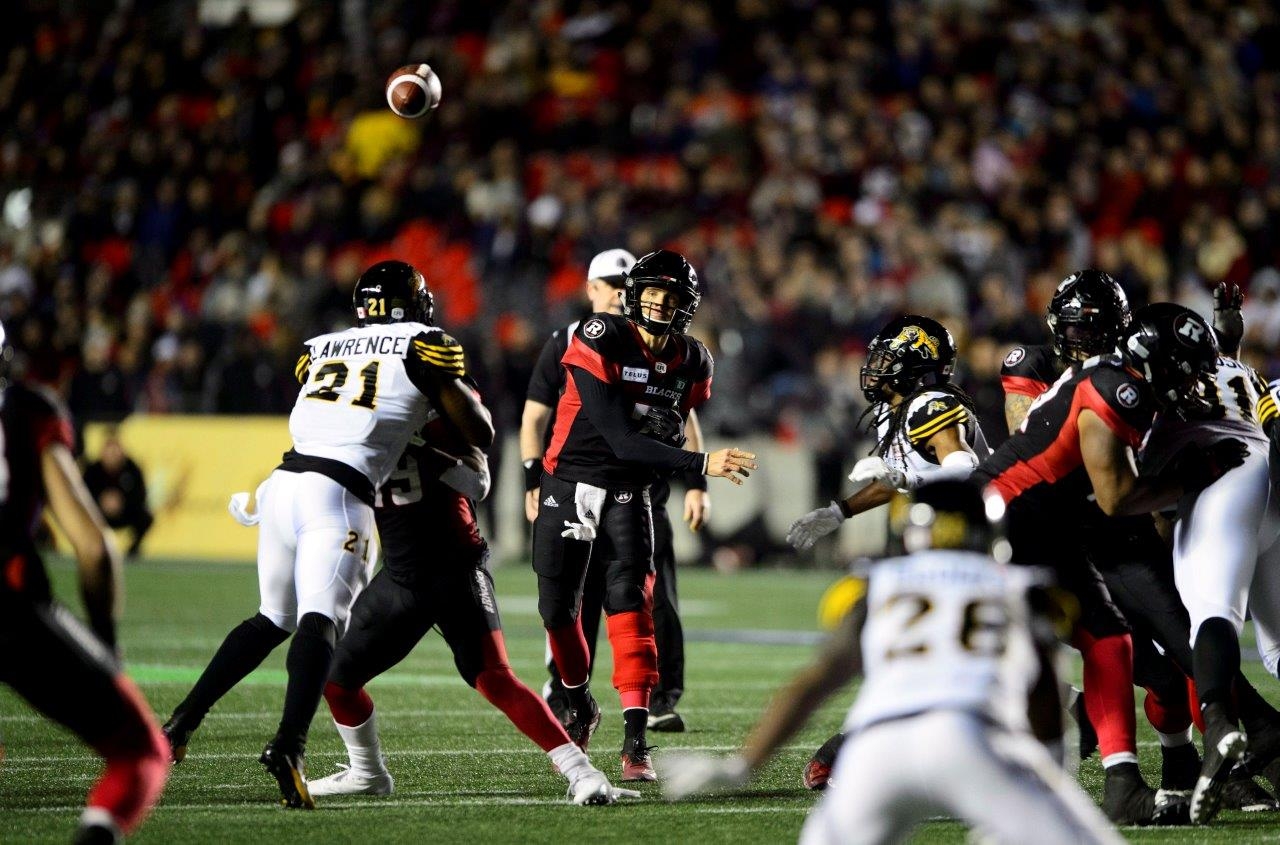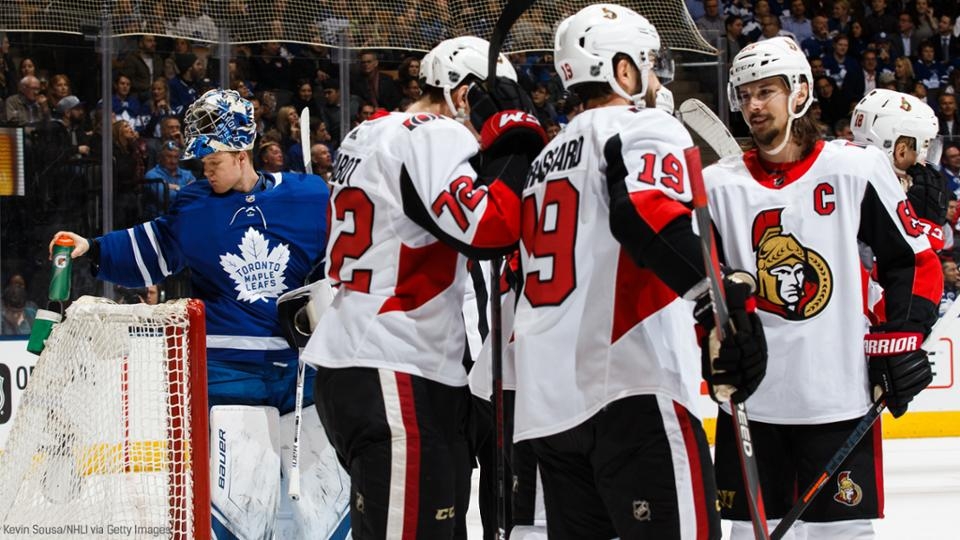
How the Redblacks Turned the Corner on Their Touchdown Troubles to Secure the East Division
Photo credit: The Canadian Press
Thanks to consecutive victories over the Hamilton Tiger-Cats, the Redblacks have already wrapped up first place in the East Division. Winning back-to-back games over a team of Hamilton’s caliber is impressive on its own, but what stands out is how the Redblacks were able to perform on offense in those crucial matchups and how it contrasts with their season long offensive production.
From what many consider to be scoring range (from the opponent’s 30-yard line and on), Ottawa scored six touchdowns combined in the two matchups against Hamilton and settled for a field goal attempt only once in each game. Settling for field goals has been a consistent trend for the Redblacks this season.
Lewis Ward’s consecutive field goal record has been one of the CFL’s top storylines in 2018. 46 successful kicks in a row and counting for the Canadian rookie kicker is a staggering mark, but the streak is also a testament to the Redblacks’ inability to fully capitalize on drives in opposing territory.
Fortunately for the Redblacks, Ward has connected on all 48 of his field goal attempts of 40 yards or less this season but cashing in with three points instead of seven (or eight, as Ottawa often likes to go for two-point conversions) has cost the Redblacks in games opposite superior offenses. Well, at least until the past two weeks against Hamilton.
Here were some key Redblacks statistics that tell the story of their scoring inefficiency prior to the last two games:
- Third-last in offensive touchdowns
- Second-last in red zone touchdown percentage (44.4%)
- Five red zone turnovers (second most)
- Averaging 23.3 points per game (Fifth in the CFL)
The Redblacks averaged 32.5 points per game against Hamilton, much of which can be attributed to their success in scoring range. So what changed?
I looked at every offensive snap for the Redblacks when in scoring range in their first 14 games of the season to compare them with the most recent two against the Ti-Cats. I disqualified drives that occurred in ‘garbage time’ (when a game was out of reach), so only meaningful plays.
First off, let’s look at play calling. The run-pass balance in scoring range was largely on par with how it was for the Redblacks across the entirety of the field in the first 14 games. In both cases, the Redblacks threw the ball roughly 66% of the time.
Not including rush attempts by backup quarterback Dominique Davis in short-yardage opportunities, the Redblacks passed the ball 71% of the time against Hamilton. However, that has a lot to do with Ottawa’s decision to rest William Powell for the second matchup. Mossis Madu started in his place in the second game but was not given a single carry in scoring range.
In the season long view, Powell averaged 4.98 yards per carry in scoring range, which is about five yards less than his full field average (5.5), but he did score seven of his eight touchdowns in 2018 on plays 30-yards or closer to the endzone.
Powell averaged only 2.7 yards in the one Hamilton game he appeared in, forcing the Redblacks to take advantage through the air. The main difference between the full season and the last two weeks has been the success of the passing game in scoring range. Here are Trevor Harris’ statistics in both cases for comparison.

The completion percentage is nearly identical but the significant differences (as highlighted) are the yards per completion and the passing touchdowns. Beyond the three scoring range passing touchdowns in the two games, Harris also setup three one-yard quarterback sneak touchdowns for Dominique Davis. That matched Davis’s season long total up to that point.
Harris attacked a Hamilton secondary that was without star defensive back Delvin Breaux for the majority of the first matchup and the entirety of the second. What has been even more remarkable, and perhaps the reason for the Redblacks’ success the last two weeks, has been Harris’ ability to spread the ball around to all four of his top targets.
Here are the comparative numbers for Redblacks receivers this year in targets, receptions and receiving yards. You can click through the graphic to see how they compare with the stats in the Hamilton games.
When you examine the last two weeks-specific statistics, you can see that the targets and receiving yards between the four top options are very similar. And who exactly was that fourth receiving option against Hamilton?
The “Other” category for targets and receiving yards is important to consider. For most of the season, the Redblacks’ fourth receiving option behind their big three (Sinopoli, Ellingson and Spencer) has been up in the air, especially in scoring range.
At different points in the season, it has been Dominique Rhymes, Julian Feoli-Gudino and even Noel Thomas to start the year. RJ Harris emerged as a steady presence in that role around midseason and saw four scoring range targets (second-most on the team) against Hamilton.
Their ability to capitalize on field position with touchdowns has given the Redblacks a golden opportunity at a trip to the 106th Grey Cup. Their newfound touchdown tendencies should prove critical against the high level teams they will face in the playoffs. That could even be the Ti-Cats again two weeks from now in the Eastern Final.
The Redblacks have nothing left to play for in the final weekend of the regular season. They will host the Toronto Argonauts this Friday night and then wait on the winner of Lions-Ti-Cats two weeks from now for the East Division title.







